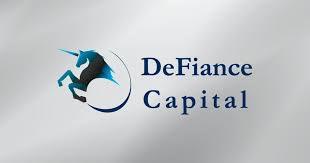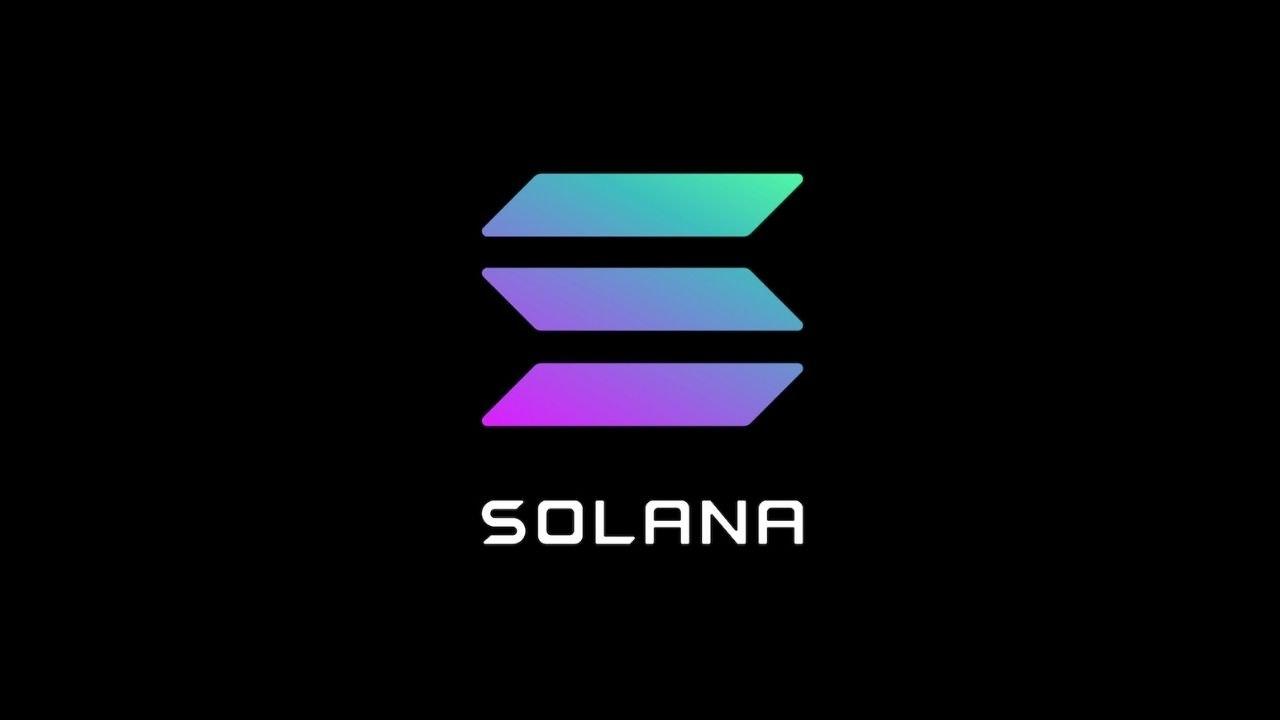Arthur0x: How to Build a $500 Million DeFi Fund
This article is from Bankless, organized by The Reading Ape.
Arthur Cheong (Arthur0x), the founder of DeFiance Capital, Asia's largest DeFi-focused fund, shared the secret of how he turned a six-figure portfolio into a nine-figure one in just three years on the Bankless podcast. He explained the fundamental elements he focuses on in protocols and the metrics he uses for valuation. He also shared which tokens he believes are currently undervalued. Which Ethereum killer would Arthur bet on?

Who is Arthur0x?
Founder and fund manager of DeFiance Capital (one of Asia's largest DeFi-focused funds), he is one of the most successful DeFi investors in the cryptocurrency space, turning a six-figure asset into a nine-figure one in three years. DeFiance Capital's investment style is fundamentally driven, rather than narrative or sentiment-based.
Arthur0x's crypto journey began in the spring of 2018 when he wanted to run a cryptocurrency research startup but couldn't find product-market fit, so he decided to focus on investing during the bear market of 2018 and bought many tokens that were overlooked at the time.
The Secrets to Arthur0x's Success
Do your homework and research, focusing not on the present but on ongoing trends.
Perseverance, especially during bear markets when people usually give up.
Believe that we are building something grander, not just speculating.
"I believe cryptocurrency is a fair competitive field, open to individuals from different backgrounds. I did not come from a very wealthy family; I came to Singapore ten years ago. For anyone willing to put in the effort, cryptocurrency truly offers them opportunities." - Arthur Cheong
Enter the cryptocurrency space, look around at the environment, form an opinion on what is happening, and then translate that into a fund or something else; this is achievable.
Spend time in the community, communicate with the teams behind protocols, and provide support. By doing so, you may influence the operation of the protocol in the future.
Token Value Accumulation
In a bear market, tokens may drop 90% and then another 80%, so prices must have a bottom line because there are still users of the product.
Since there are users, the token will definitely have some value accumulation, so it shouldn't go to zero.
This should give token holders more confidence during downturns.
Points to note:
Does the token have good design, and is it well integrated into the platform?
Does the token have strong value accumulation?
Can the token act as a catalyst for protocol growth?
How does the project team plan to allocate the tokens?
Example: Synthetix
I have liked Synthetix's tokenomics from the very beginning.
They were the first to use token inflation to incentivize the community and early adopters.
The inflation level was very high at first, then gradually decreased to reward early users who believed in the protocol and took on initial risks.
By taking on the risks of the Synthetix protocol, token holders can earn returns from the fees generated by the protocol, including the original tokens and additional fee income generated when people trade on the protocol.

Example: Bancor
After many iterations, they finally arrived at a reasonable tokenomics model.
Bancor creates maximum value for token holders—40% to 60% of fees go to Bancor token holders, not in the form of income, but as burns.
At the same time, it supports new liquidity pools.
The mechanism is still very complex, and not many people understand it, so it hasn't received high praise.
Example: Aave and Compound
The value accumulation between the two is very similar.
A small portion of the interest earned by depositors is allocated to the Treasury.
In the future, token holders can vote on how to use the accumulated reserves in the Treasury, either returning it to token holders or further investing in the protocol.
How to Build Confidence and Have Belief?
- Your confidence increases when you continuously do something and receive validation from your actions.
"Confidence is the memory of victory. And I believe it should be the same for everyone. For example, when you are doing something, and you continuously receive some form of validation from your actions, your confidence will keep growing." - Arthur Cheong
Arthur's first major investment was in Synthetix during the bear market.
He spent a month and a half writing a very comprehensive report on Synthetix, which received very positive feedback after publication.
A few months later, the market began to respond, and confidence was built.
By continuously repeating this method, despite Bitcoin's dominance, his operations successfully outperformed Bitcoin, giving him the confidence and signal to establish DeFiance Capital.
Advantages of DeFiance Capital
One of the top cryptocurrency-native funds that can directly invest in DAOs.
Has worked in this field for a long time and is familiar with this structure.
The DAO structure also provides some protection for investors, as most can influence decisions.

Fundamentals
Team quality, such as the track record established by the team.
Valuation of the protocol.
Technical architecture.
Community engagement.
Token value accumulation.
Recent catalytic factors.
On Decentralization
Decentralization can only prevent protocol hacks.
It does not help prevent related risks, as all assets may drop at the same time (bear market).
However, in a bull market, some protocols will perform better than others based on fundamentals.
On MEME Investment Overriding Fundamental Investment
Similar to traditional stock investing, before Benjamin Graham published his book "Security Analysis," no one had a way to correctly value stocks.
Similarly, we are in a similar stage in cryptocurrency, so retail investors need to be educated in each market cycle.
On Valuation Metrics for Decentralized Exchanges (DEX)
Trading volume.
Fees charged relative to the protocol's market cap; for non-stablecoin protocols, 0.05% of trading volume as fees, while for stablecoin protocols, slightly lower (e.g., Curve is 0.04%).
Similar to the price-to-earnings ratio (PE) in TradFi.
Total Value Locked (TVL)—indicates how much capital is secured by this protocol.
Capital efficiency—depends on different protocols.
Users and user growth—e.g., Uniswap has no cash flow as there is currently no value capture, but has a huge user base and performs best in user growth in the industry, hence its high valuation.
Buybacks and Burns
Arthur0x believes that buybacks and burns are not the ideal solution, especially when a protocol still has significant growth potential.
In early-stage startups in the TradFi world, no one would conduct stock buybacks or issue stable dividends.
If it still has significant growth potential, capital should be reinvested rather than directly burned.
Areas for reinvestment could include: more education, more outreach efforts, more translations so that non-English communities can join the space.
Distributing dividends to token holders may have tax implications, but there should still be better design methods.
Which DeFi Protocols Are Undervalued and Why?
Sushiswap
Given their trading volume, the price shouldn't be where it is now.
Some believe that Uniswap V3 will kill Sushiswap because it is like an old version of V2 design.
However, it has not been fully realized.
Uniswap V3 is more suitable for active liquidity providers (LPs), i.e., professional market makers, making it difficult for retail players to become passive LPs in V3.
Some tests (though with a small sample size) show that V3 does not necessarily perform better than V2.
At the current price, Sushiswap's price reflects zero growth, which is unlikely to happen.
Aave and Compound
Lending is the easiest to establish a moat in DeFi.
New lending protocols using similar designs on Ethereum will not disrupt Aave and Compound within a year.
Why? Building trust takes a long time; these two protocols have been running for over a year without security incidents (Note: Compound had a oracle attack incident).
It also takes a long time to establish network effects, as you need sufficient deposits on the platform for people to borrow.
Finally, due to the higher value of the tokens, the liquidity incentives they provide are also more effective.
Will There Be Only One Automated Market Maker (AMM) in the Future?
Arthur0x does not believe in the power law (that only one AMM will dominate the market).
Why? Liquidity is interchangeable, with no loyalty.
If a new AMM has an excellent design, liquidity will flow to it, and it will dominate for a period.
When in equilibrium, there may be several dominant AMMs, and their market shares will not change significantly.
Additionally, once orders reach a certain scale, people will also start using aggregators.
Ethereum Killers
Most competitors will not be able to dominate Ethereum; perhaps fewer than five can compete with it but cannot kill it.
Currently, over 95% of DeFi and NFTs are on Ethereum, and this number may drop to 80% in the next two years.
Reasons
Other protocols are starting from scratch, so their growth rates will be faster than Ethereum's.
Some ETH killers are using blue ocean strategies, targeting new users who have not yet joined.
Ethereum's network effects are deeply rooted.
EVM-compatible scaling solutions further help solidify Ethereum's network effects.
Ethereum itself is also continuously improving.
Ethereum has a clear roadmap showing how they plan to further decentralize.
More on Ethereum's Network Effects
Binance previously tried to establish their own DEX but failed; after grasping the essence of Ethereum's network effects, they quickly became the cryptocurrency company with the largest user base.
Switching the base layer is not an easy task, unlike switching Dapps.
"I think the best analogy is the App Store. Just like now, the two main app stores are Google and Apple. Even a tech giant like Microsoft, trying to compete in this area with its own app store, cannot succeed."
------- Arthur Cheong
- A good analogy is that just as Google and Apple have their own app stores, when a large tech company like Microsoft tries to compete in this area, they also fail.
Which ETH Killer Would Arthur Bet On?
Solana is the best competitor to Ethereum.
It cannot compete in areas where Ethereum excels; it must take a completely new approach.
Solana will not be as decentralized as Ethereum, and due to higher hardware requirements, they will have far fewer nodes.
He would rather bet on something completely different than on another protocol that makes marginal improvements to Ethereum.

How Do Views on Cryptocurrency Differ Between the East and West?
Asia can be divided into two distinct parts: English-speaking regions and non-English-speaking regions.
Historical and cultural factors will determine the speed of adoption.
English-speaking Regions
Such as: India and most of Southeast Asia
Adoption is quite common.
Understanding DeFi and using it in significant ways.
Having a decent DeFi community.
More built-in checks and balances need to be seen in protocols.
Chinese-speaking Regions
Such as: China, Hong Kong, and Taiwan
Initially skeptical in 2018 (whether these places could become significant), but after the DeFi summer of 2020, many new users can be seen.
Less focus on the concept of cryptocurrency.
More focus on self-custody of assets, as they saw the OKEx incident where no one could withdraw any balances for two months.
Their trust is more in the teams behind the protocols.
Japan and South Korea
Due to language barriers, fewer people use DeFi compared to other regions.
Currently, over 95% of DeFi and NFTs are on Ethereum, and this number may drop to 80% in the next two years.
Language barriers can be crossed through translation and building a strong foreign language community.
Citing Vitalik's example of promoting Ethereum in China, there is now a large committee in China with a very good atmosphere for sharing ideas.
Singapore Government's View on Cryptocurrency
The top regulatory bodies are indeed trying to understand cryptocurrency, and their level of understanding may be among the highest globally.
They know the benefits of DeFi, but whether they are fully convinced remains to be seen.
They want to wait and see if the benefits of DeFi can translate into real-world activities.
Following the FATF guidelines drafted by major countries like the US and EU.
There are fewer prosecutions and aggressive actions.
Views on the Cryptocurrency Industry in the Second Half of 2021
After the success of Polygon and Binance Smart Chain, there are more scaling solutions.
More users will join; currently, there are 1 million users, but by the end of the year, it may increase to 5 million to 10 million.
Predicting that TVL will reach 200 billion by the end of the year and ETH prices will reach around 5,000 to 10,000 by year-end.










